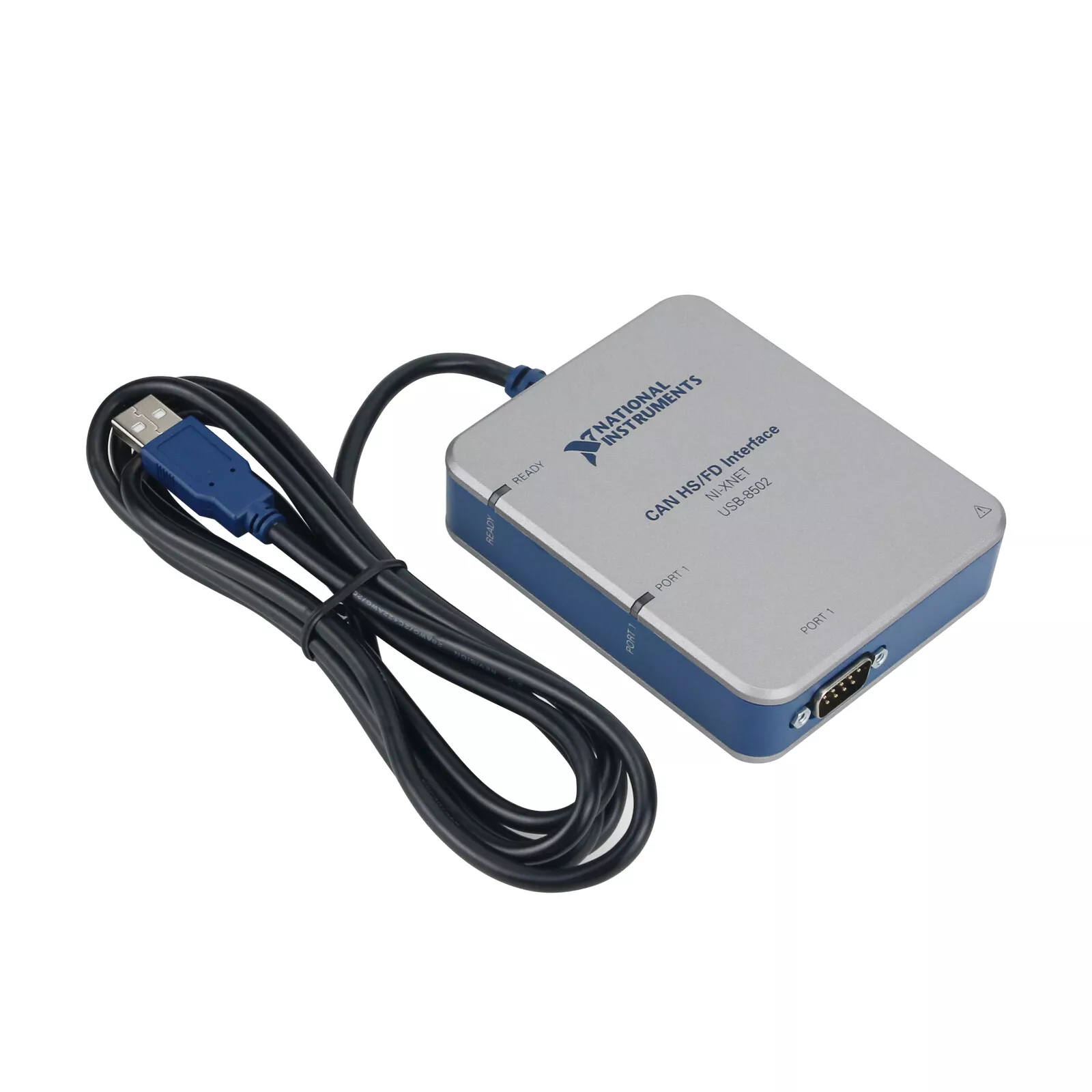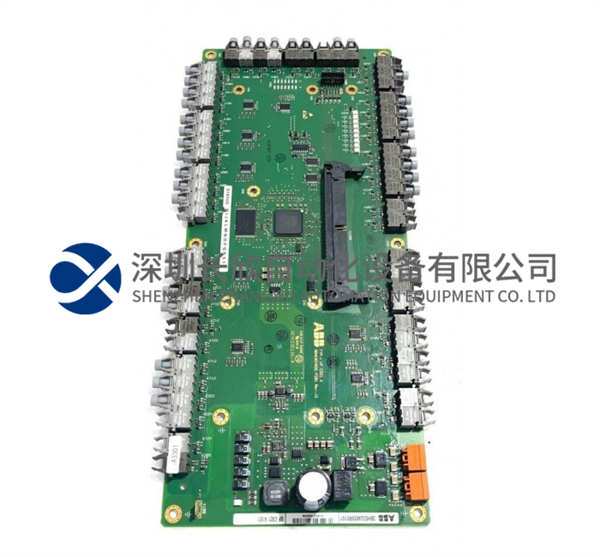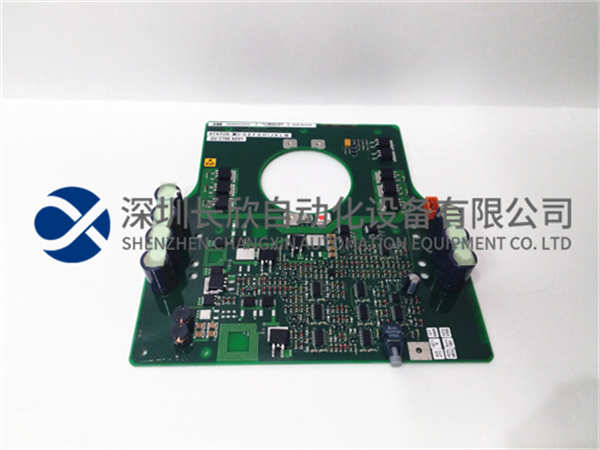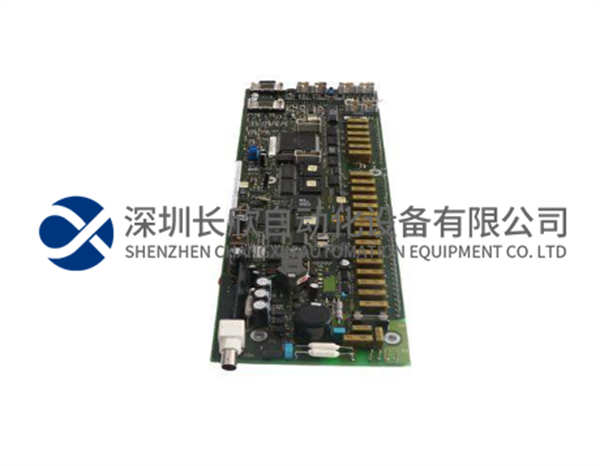描述
一、基本参数
接口类型:
主机接口:USB 2.0(兼容USB 1.1),支持即插即用,无需外部电源(总线供电)。
CAN接口:2路独立CAN通道,每路支持高速(1 Mbps)和低速(125 kbps)模式。
电气特性:
隔离保护:每路CAN通道提供2500 Vrms电气隔离,防止地环路干扰和设备损坏。
终端电阻:支持120Ω终端电阻配置(可通过软件启用/禁用)。
工作电压:9-30 V DC(兼容汽车12 V/24 V系统)。
物理特性:
尺寸:紧凑型设计,适合嵌入式安装或便携式测试。
连接器:DB9母头(CAN通道1和2),兼容标准CAN接线。
二、核心功能
CAN协议支持:
完全兼容CAN 2.0A/B规范,支持标准帧(11位ID)和扩展帧(29位ID)。
支持CAN FD(Flexible Data Rate)协议(需NI-XNET驱动18.0或更高版本),数据速率可达5 Mbps。
支持错误帧检测与生成,便于故障诊断。
实时性与同步:
硬件时间戳:每条CAN消息附带高精度时间戳(分辨率1μs),支持多设备同步分析。
触发功能:支持外部触发(TTL信号)或软件触发,实现精确的事件同步。
软件兼容性:
NI-XNET驱动:提供统一的API,兼容LabVIEW、C/C++、Python等开发环境。
LabVIEW集成:通过NI-XNET模块直接调用CAN函数,无需底层编程。
第三方工具支持:兼容Vector CANoe、PEAK PCAN-View等工具(需配置)。
三、典型应用场景
汽车电子开发:
ECU(电子控制单元)测试与标定(如发动机控制、车身控制)。
车载网络通信测试(CAN总线监控、故障注入)。
工业自动化:
工业设备CAN总线数据采集与监控(如机器人、CNC机床)。
分布式控制系统通信测试。
航空航天与国防:
航空电子设备CAN总线验证(如飞行控制系统)。
军用车辆通信协议测试。
能源与交通:
电动汽车充电桩CAN总线测试。
智能交通系统(ITS)通信协议验证。
四、优势与局限性
优势:
双通道独立隔离:每路CAN通道独立隔离,避免通道间干扰,提升系统可靠性。
高性能与低延迟:USB 2.0接口结合硬件时间戳,满足实时性要求。
易用性:NI-XNET驱动提供直观的配置界面,加速开发流程。
局限性:
通道数较少:仅2路CAN通道,大规模多节点测试需多设备扩展。
不支持LIN/FlexRay:若需多协议支持,需选择NI USB-8502的升级型号(如NI XNET-1610)。
五、配套软件与工具
NI-XNET Driver:
核心驱动软件,提供CAN消息收发、数据库管理、错误处理等功能。
支持LabVIEW Real-Time和FPGA模块,实现确定性控制。
NI VeriStand:
实时测试配置软件,支持CAN总线数据记录与回放。
NI DIAdem:
数据分析与报告工具,用于CAN总线数据后处理。
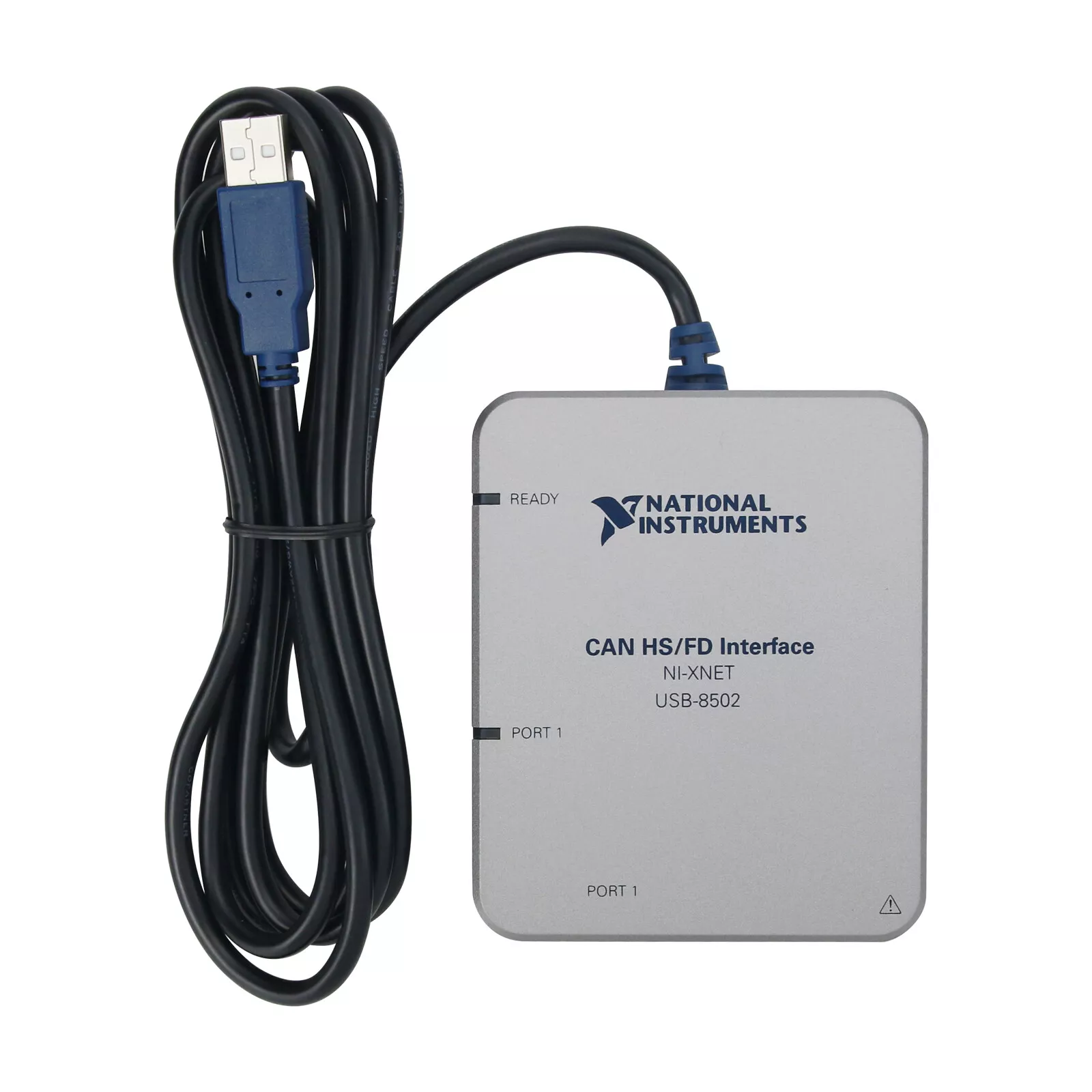
第三方工具兼容性:
通过NI-XNET的PCAN-USB兼容模式,可与Vector CANoe、PEAK PCAN-View等工具集成。
1.Basic parameters
Interface type:
Host interface:USB 2.0(compatible with USB 1.1),supports plug-and-play,no external power supply(bus-powered)required.
CAN interface:2 independent CAN channels,each supporting high-speed(1 Mbps)and low-speed(125 kbps)modes.
Electrical characteristics:
Isolation protection:Each CAN channel provides 2500 Vrms electrical isolation to prevent ground loop interference and equipment damage.
Terminal resistance:Supports 120Ωterminal resistance configuration(can be enabled/disabled by software).
Operating voltage:9-30 V DC(compatible with automotive 12 V/24 V systems).
Physical characteristics:
Size:Compact design,suitable for embedded installation or portable testing.
Connector:DB9 female(CAN channels 1 and 2),compatible with standard CAN wiring.
2.Core functions
CAN protocol support:
Fully compatible with CAN 2.0A/B specifications,supporting standard frames(11-bit ID)and extended frames(29-bit ID).
Supports CAN FD(Flexible Data Rate)protocol(requires NI-XNET driver 18.0 or higher),with a data rate of up to 5 Mbps.
Supports error frame detection and generation for easy fault diagnosis.
Real-time and synchronization:
Hardware timestamp:Each CAN message comes with a high-precision timestamp(resolution 1μs),supporting multi-device synchronous analysis.
Trigger function:Supports external trigger(TTL signal)or software trigger to achieve precise event synchronization.
Software compatibility:
NI-XNET driver:Provides a unified API,compatible with development environments such as LabVIEW,C/C++,and Python.
LabVIEW integration:Directly call CAN functions through the NI-XNET module without the need for underlying programming.
Third-party tool support:compatible with Vector CANoe,PEAK PCAN-View and other tools(need to be configured).
III.Typical application scenarios
Automotive electronics development:
ECU(electronic control unit)testing and calibration(such as engine control,body control).
In-vehicle network communication testing(CAN bus monitoring,fault injection).
Industrial automation:
Industrial equipment CAN bus data acquisition and monitoring(such as robots,CNC machine tools).
Distributed control system communication testing.
Aerospace and defense:
Aviation electronic equipment CAN bus verification(such as flight control system).
Military vehicle communication protocol testing.
Energy and transportation:
Electric vehicle charging pile CAN bus testing.
Intelligent transportation system(ITS)communication protocol verification.
IV.Advantages and limitations
Advantages:
Dual-channel independent isolation:Each CAN channel is independently isolated to avoid interference between channels and improve system reliability.
High performance and low latency:USB 2.0 interface combined with hardware timestamp to meet real-time requirements.
Ease of use:The NI-XNET driver provides an intuitive configuration interface to accelerate the development process.
Limitations:
Fewer channels:Only 2 CAN channels,large-scale multi-node testing requires multi-device expansion.
Does not support LIN/FlexRay:If you need multi-protocol support,you need to choose an upgraded model of the NI USB-8502(such as NI XNET-1610).
V.Supporting software and tools
NI-XNET Driver:
Core driver software that provides CAN message sending and receiving,database management,error handling and other functions.
Supports LabVIEW Real-Time and FPGA modules to achieve deterministic control.
NI VeriStand:
Real-time test configuration software that supports CAN bus data recording and playback.
NI DIAdem:
Data analysis and reporting tool for CAN bus data post-processing.
Third-party tool compatibility:
Through NI-XNET’s PCAN-USB compatible mode,it can be integrated with tools such as Vector CANoe and PEAK PCAN-View.

